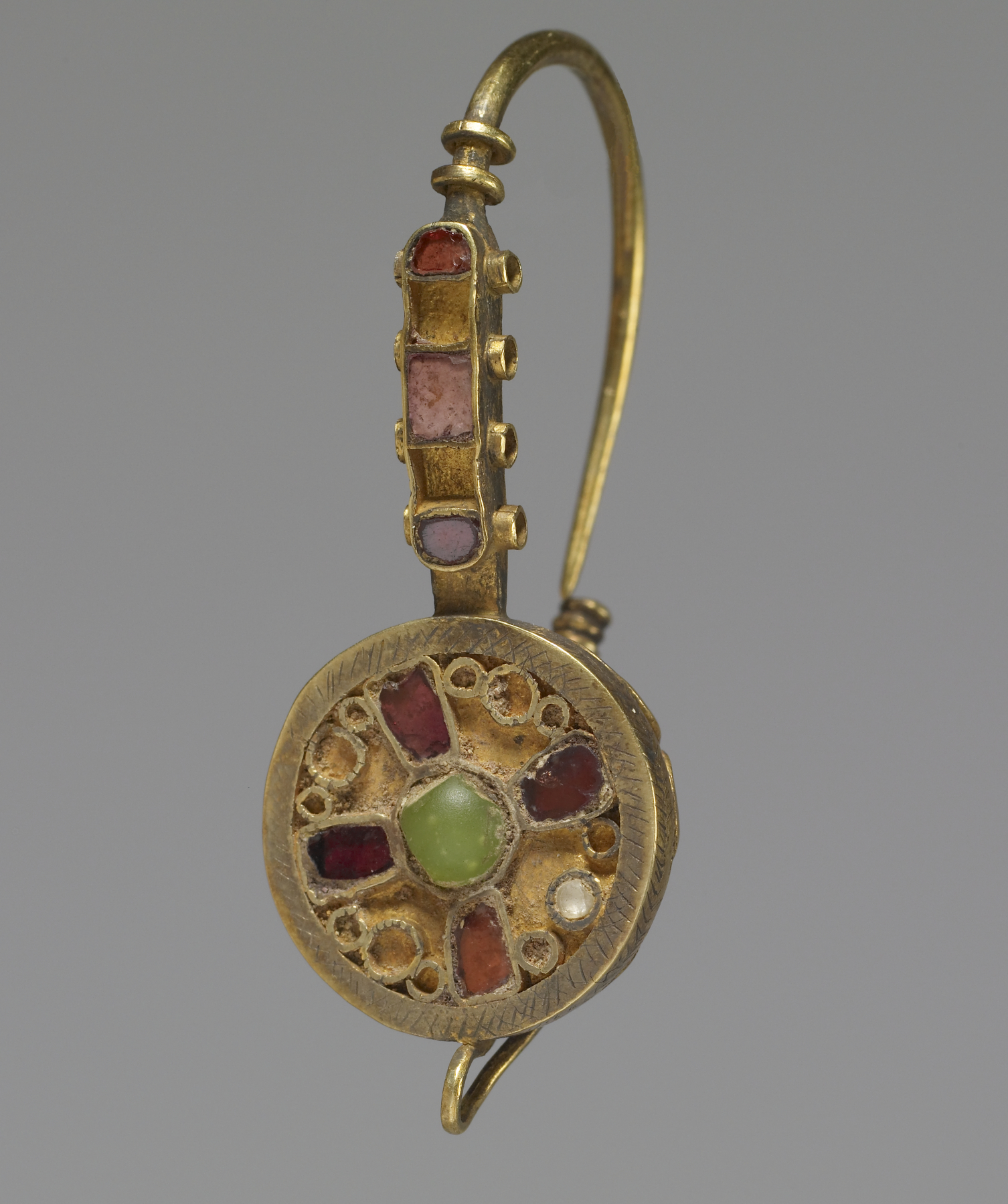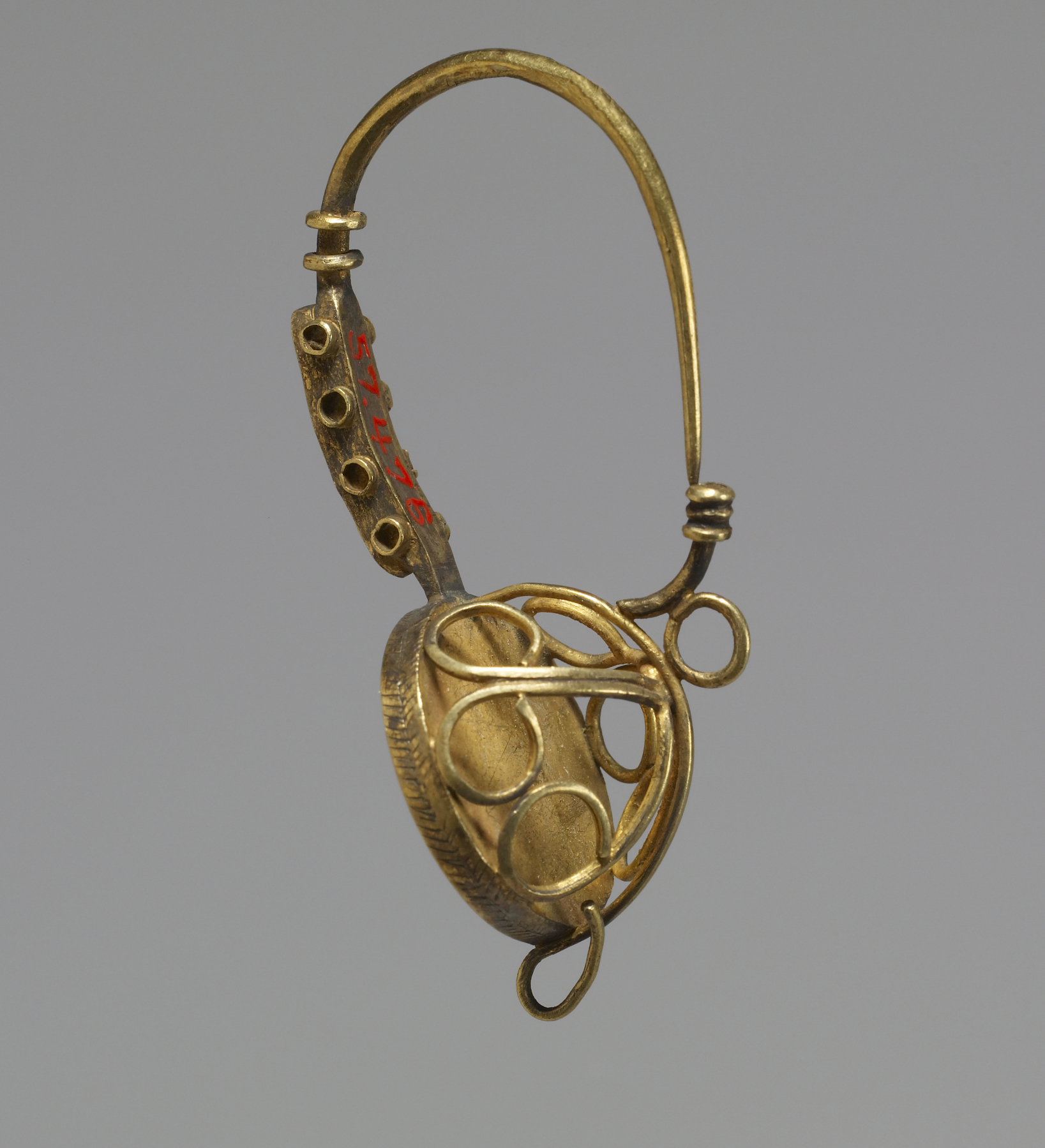Basket Earring
One of the most common types of Langobardic jewelry, the basket earring derives its name from the hemispherical "basket" of gold wire as in this example. The front disk of gold is inlaid with gold wire cells for four red glass or garnet inserts arranged like the arms of a cross around a central, circular cell filled with a rounded green stone or glass. A triad arrangement of one large and two small circular gold wire circlets fills the space between the garnet inlays and creates a ring around the cross. A thick, flattened lip of gold decorated with hatching and cross-hatching overlays the outer edge of the disk where it joins the basket. On the front of the hoop are a row of five cells for red glass or garnet inlays, of which three are still filled. The sides of the hoops are decorated with a row of four wire circlets. A loop attached to the base of the earring once suspended an additional pendant.
Provenance
Provenance (from the French provenir, 'to come from/forth') is the chronology of the ownership, custody, or location of a historical object. Learn more about provenance at the Walters.
Joseph Brummer, Paris; Henry Walters, Baltimore, 1927, by purchase; Walters Art Museum, 1931, by bequest.
Exhibitions
| 1979-1980 | Jewelry - Ancient to Modern. The Walters Art Gallery, Baltimore. |
| 1947 | Early Christian and Byzantine Art. Baltimore Museum of Art, Baltimore. |
Geographies
Italy (Place of Origin)
Measurements
H: 2 x W: 3/4 x D: 15/16 in. (5.1 x 1.9 x 2.4 cm)
Credit Line
Acquired by Henry Walters
Location in Museum
Centre Street: Third Floor: Migration and Early Medieval Art
Accession Number
In libraries, galleries, museums, and archives, an accession number is a unique identifier assigned to each object in the collection.
In libraries, galleries, museums, and archives, an accession number is a unique identifier assigned to each object in the collection.
57.476






